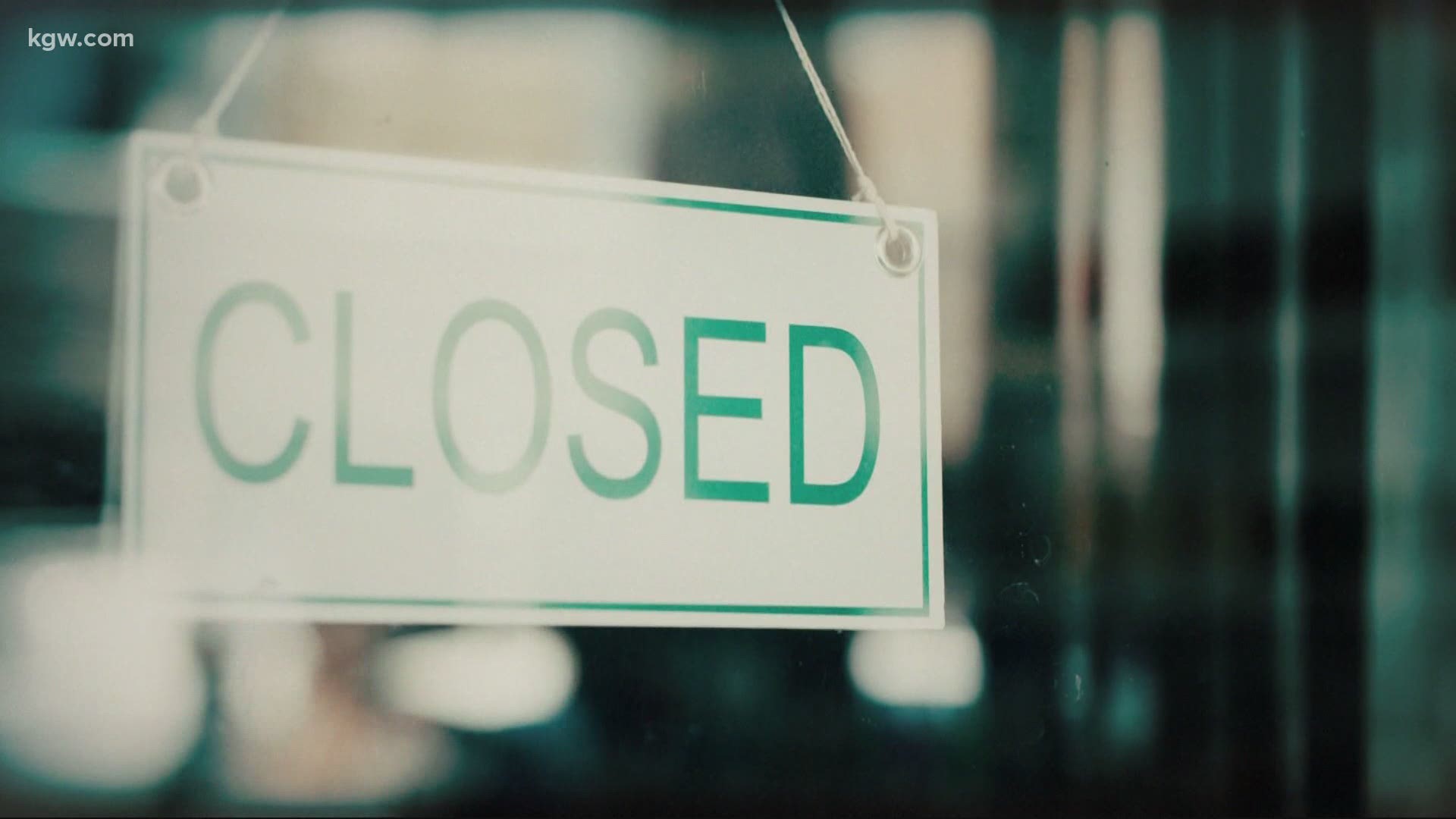PORTLAND, Ore — If you've been wearing a face covering while out and about, keep it up.
If not, Oregon's governor and public health officials advise you invest in one.
Gov. Kate Brown announced plans to slowly reopen Oregon on Thursday and it looks like face coverings will be continue to be a part of our daily lives for quite a while.
Under new guidelines, the governor strongly recommends people wear face coverings in any public space, especially if people can't maintain a six-foot distance from others.
If you work in a place where social distancing, or physical distancing, can't be maintained, you're required to wear cloth, paper or disposable face coverings that cover your nose and mouth. That includes people who work in grocery stores, pharmacies, public transit, salons and ride-sharing services. Businesses must provide face coverings for their employees if they don't have their own.
It's strongly recommended that businesses where workers are required to follow those guidelines also create policies requiring their customers wear face coverings.
During the press conference Thursday, Gov. Brown said the state's recommendations are to ensure Oregonians are protecting themselves and their community.
"I’m asking Oregonians to be both kind and smart to protect themselves but also to protect members of their families and folks they come into contact with," Gov. Brown said.
In wearing face coverings at the store, the governor, alongside public health experts, said we are protecting hard-working grocery store clerks.
Her team is in the process of building a website to support access to personal protective equipment (PPE) for medical workers, the business community and for vulnerable Oregonians and their families.
The governor's framework consists of a new, three-phased approach for counties, health regions and businesses.
Highlights of the plan:
- Counties with few or no COVID-19 cases could enter Phase 1 on by May 15
- Employees in businesses where social distancing cannot be maintained are required to wear face coverings
- Child care facilities can expand operations and some summer schools and camps can open May 15, with social distancing and other new restrictions in place
- Concerts, sporting events and large gatherings will be canceled through at least September
Some statewide restrictions have been lifted already; on May 1, non-emergency medical procedures were again allowed, and on May 5, some state parks and day use areas were open.
On May 15, some standalone retail businesses that can follow these guidelines will be allowed to open, including furniture stores, art galleries, jewelry shops and boutiques.
Also on May 15, child care facilities can expand operations and some summer schools, camps and youth programs will be allowed to resume, with limitations and specific guidelines including physical distancing procedures.
Beyond that, counties and regions will have to meet seven prerequisites before entering Phase 1 of the reopening plan:
- Declining COVID-19 prevalence (by county)
- Minimum testing regimen (by health region)
- Contact tracing system (by county)
- Sufficient isolation/quarantine facilities (by county)
- Finalized statewide sector guidelines (statewide)
- Sufficient health care capacity (by health region)
- Sufficient PPE supply (by health region)
When a county has entered Phase 1, restrictions will be eased in the following four sectors, with the listed requirements included:
- Restaurants and bars: Sit-down dining with 6-foot physical distancing requirement, limit groups to parties of 10 or fewer and end food and drink consumption by 10 p.m. and workers are required to wear masks
- Personal care — salons, barbers, massages: physical distancing, appointment-only, PPE and customer list required
- Personal care — gyms/fitness: maximum gathering limit; physical distancing and sanitation required
- Local gatherings – tentative: up to 25, with no travel
Oregon Health Authority (OHA) Director Dr. Patrick Allen said Thursday it's safe to assume the majority of counties will be in a place next Friday to begin the safe, phased process of reopening.
"Now we’re on the cusp of reopening. But that doesn’t mean COVID-19 has gone away," Dr. Allen said, "It continues to lurk in our communities, it continues to threaten lives of Oregonians, especially older adults, and it continues to put the health and well-being of people color, people of lower incomes and healthcare workers at disproportionate risk. We’re not in the clear in our country or in our state.”

